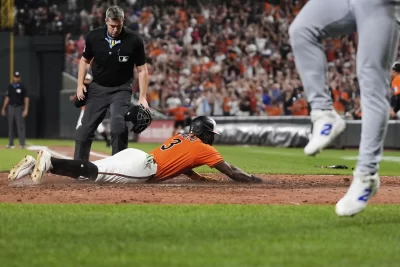
If you’re bored with day-in, day-out sports like basketball or swimming or volleyball, then check out the Asian Games when they open officially on Saturday in Hangzhou, China.
Of course, the games will have the regular Olympic menu of events with some offering qualifying spot for next year’s Paris Olympics.
But much of the focus will be on sports that are popular in a region that represents 45 nations and territories. About 12,500 are participating, more than the Summer Olympics.
Some of the regional sports specialties include kabaddi, sepaktakraw, wushu, and kurash. The Asian Games will also feature so-called “mind sports” that include bridge, chess, xiangqi (known as Chinese chess) and several others.
Esports, offered as a demonstration sport five years ago at the games in Indonesia, is official this time and should be a big hit.
This homegrown sport from the Indian subcontinent is so popular that the area hosts a professional league that draws millions of viewers. The sport involves no clubs, rackets, goals — and not even a ball. Kabaddi — pronounced kuh-bud-DEE — was played as an exhibition sport in the 1936 Berlin Olympics but has never gained a wide following outside the Indian subcontinent.
It bears a rough resemblance to the schoolyard game known in the United States as “Red Rover,” or a game known in England as “British Bulldog.”
Two teams with seven players each compete on a small court. A single player on the offense — called a “raider” — crosses the centerline and tries in 30 seconds to touch as many players as possible on the other side and return across the centerline without being tackled. It’s played in a pair of 20-minute halves. Points are earned by tagging opponents, or by stopping the raider.
SEPAKTAKRAW
This is essentially volleyball, with a few big differences. Players can’t use their hands — they can use anything else — and the ball it primarily kicked over a five-foot high net. There are two, three or four players on each side and in the United States, at least, the sport is often known as “kick volleyball.”
Like volleyball, the goal is to get the ball to hit the ground on the opponent’s side of the net. The ball is smaller than a volleyball or soccer ball — about the size of a cantaloupe or a large grapefruit . “Sepak” is the word in Malay for “kick,” and “takraw” has its origin in the the Thai language and means “woven rattan ball.”
The game has its roots primarily in Malaysia and elsewhere across Southeast Asia.
WUSHU
Wushu, also known as kung fu, is the Chinese term for “martial arts.” It has had a presence in the Asian Games since 1990 when it was introduced at the games in Beijing. It has also been proposed as an Olympic sport but has not been voted in.
Competition takes place in two distinct areas.
Competition in talou involves performing sets and choreographed routines that show off principles of attack and defense. These involve jumps, stances and footwork. Sanda is the full-contact version of the sport and is often known as Chinese kickboxing.
China won 10 gold medals in wushu at the 2018 Asian Games with two for Iran, and one each for Indonesia and Macau. Macau is part of China. China is expected to again dominate.
KURASH
This involves a range of folk wrestling styles that are popular in Central Asia. It was first introduced into the Asian Games fives years ago in Indonesia when Uzbekistan topped the medal table in the sport. Historians say the sport dates to thousands of years. Iran, Mongolia, Taiwan, and India also won multiple medals in 2018.







